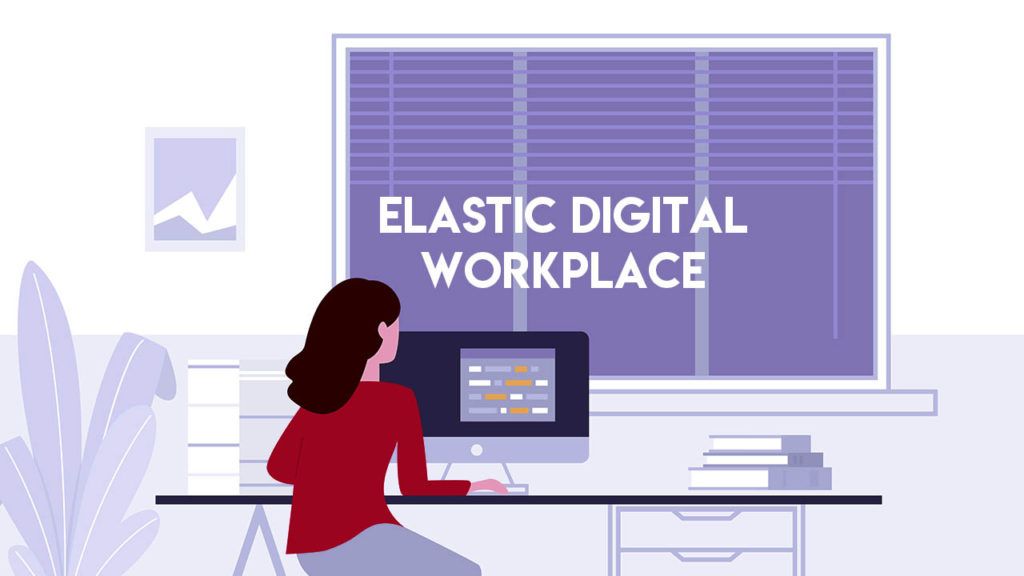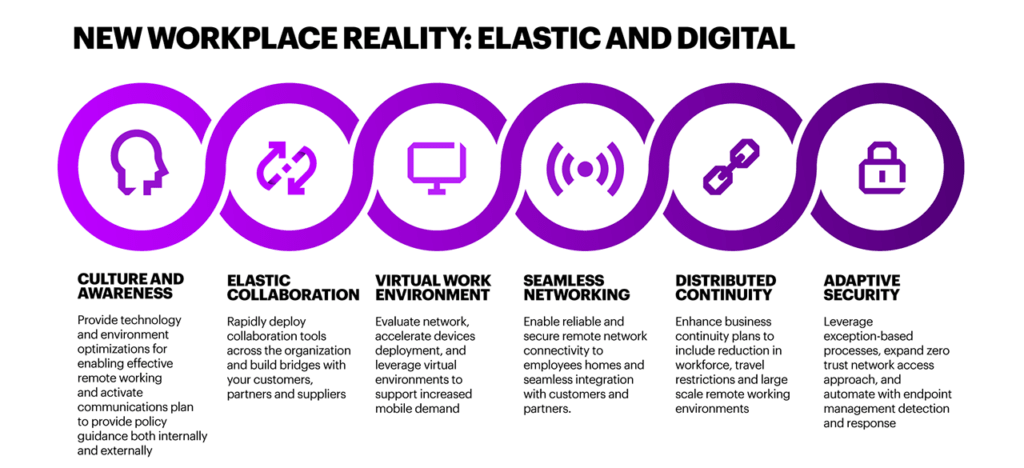We are on the crossroads of technological change. As the world moves towards industry 4.0, we see a sea of change in the workplace. Some of which have nothing to do with technological changes. Let us understand what we mean by the Elastic Digital Workplace. Additionally, let us also look at how it is going to change The way we do our work.
Contents
Industry 4.0
Industry 4.0 Is another name for the 4th industrial revolution. This revolution Is centered around the concept of automation and autonomous systems. However, it also talks about how we enhance our workplace. Although there is the fear of job losses and replacement of manual labor, the changes are also expected to enhance the quality of work. Further, it would help us have a better work-life balance.

Digital workplace
There are two major advantages of the digital workplace. Firstly, It makes the work more flexible. Employees have the freedom to choose their own working hours. On the other hand, it also reduces stress due to commuting.
However, there are some additional aspect when we talk about the digital workplace in the context of industry 4.0 . For instance there would be higher assistance in the tasks through automation.
Elastic digital workplace
Elastic Digital Workplace is another name for flexible work. However, it is more formal and planned.
An elastic digital workplace extends the workplace using information and communication technology. One of the pioneers in this area is Accenture. They have outlined some key areas to develop the elastic digital workplace. This can be considered as best practices as well.
The 6 best practices to develop elastic digital workplace
- Culture and adoption
- Elastic collaboration
- Virtual work environment
- Seamless networking
- Distributed continuity
- Adaptive security
Now we shall look at each of these to understand it better.

Culture and adoption
Culture is the core of any digital transformation. We know that from the last four decades of digital transformation in organizations. Some of the key issues plaguing remote work is not digital in nature. These are cultural aspects. Managers need to communicate effectively with their teams. It is also essential to maintain a balanced approach to work. One of the common complaints across the world is that off overworking due to COVID-19.
The best way forward is to have a corporate-level policy in this regard. The guidance needs to come from the top. Human resource executives can plan training sessions for managers across the firm.
Elastic collaboration
Immediately after the COVID-19 breakout there has been a spike in the share prices for Zoom. This shows the importance of the telecommunication backbone. This is the backbone where the entire elastic collaboration stands.
Some of the leading firms have been quite proactive in the adoption of modern communication technologies. In this regard, Accenture has suggested something else. They have proposed that the communication channels must act as a connector not just between the employees of the firm. It should also link the organization with the customers as well as vendors.
Virtual work environment
In this section, we shall talk about the technological challenges that need to be met. We are talking about infrastructure as well as the network.
Enterprise networks may not be designed keeping in mind the data requirements of an elastic digital workplace. The virtual work environment demands seamless cloud access to the data, software, and other services of the firm. The second critical aspect of VWE is mobile device adoption.
Seamless networking
We have talked about the devices and the enterprise network. However, there are other challenges apart from the bandwidth requirements.
Firstly, the challenge is that of security. On the one hand, we have the enterprise security. One, on the other hand, we have employee level security. Remote work environment may bring with itself its own set of challenges regarding security and data privacy. Reliable vendors can help you mitigate this problem.
Distributed continuity
This may seem like an oxymoron. However, here we are talking about work continuity regardless of distributed employees. Anyone who has worked in an office will be able to relate to this problem. It is difficult to manage remote work for a few employees.
When an entire office works from home things become pretty complicated. Add to that, the issues due to government-imposed restrictions on travel. All these changes can easily disrupt the work.
Adaptive security
We already see that there is an overlap between the different recommendations under the elastic digital workplace. However, the presence of various types of devices would induce new types of vulnerabilities. Some of these could be totally unknown.
The security management and handling need to be robust enough to handle any exceptions. Additionally, there must be processes to apprehend and escalate any violations of security protocols. It is imperative that some of these are automated.
The future work and the Elastic Digital Workplace
There have been mixed results from the pandemic induced EDW. While some companies have reported an increase in productivity, others have reported a reduction. Also, it has been a cost-saver for some firms as they are saving on office running costs. However, some firms have reported an increase in operating costs. However, the future is the Elastic Digital Workplace.
Indian IT giant, Tata Consultancy Services has reported that its costs have gone up due to the COVID-19 lockdown. However, they have also said that they are planning to make work from home(WFH) permanent for about 75% of their workforce by 2025. Currently, around a fifth of their employees WFH.
